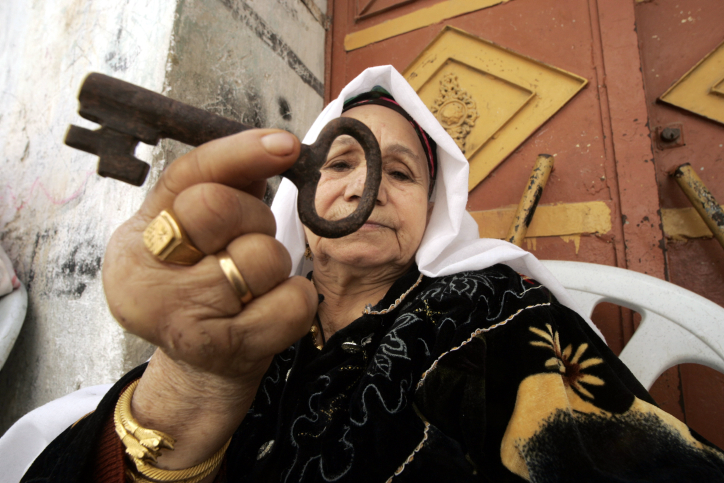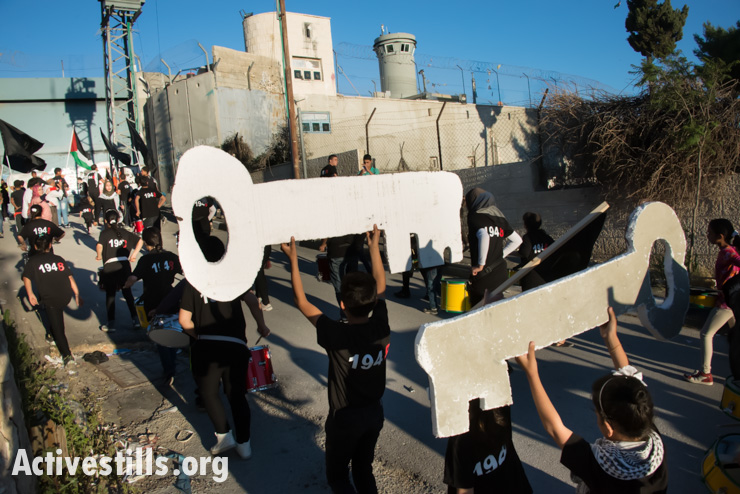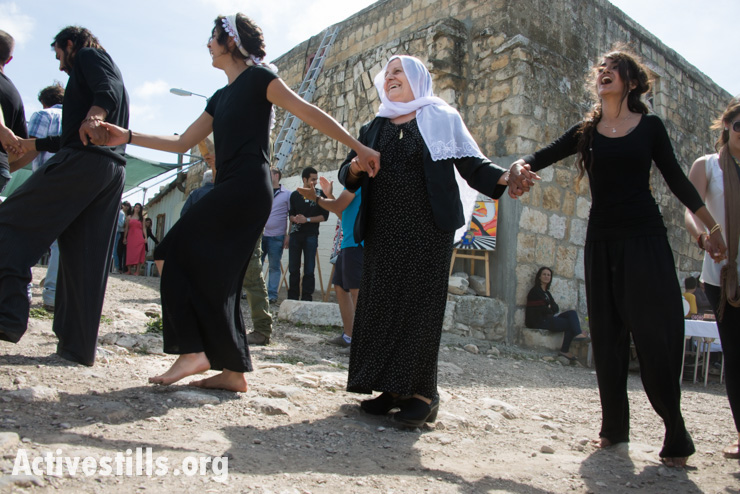Seventy years after the violent displacement of hundreds of thousands of Palestinians, it is time to undo the injustice and to enable whoever desires to return as equal citizens to do so, while respecting the rights and identities of all who live in Israel-Palestine.
By Tom Pessah (translated by Yoni Molad)

For millions of Palestinians worldwide, the right of return is a fundamental issue — the most important precondition for resolving the conflict. However, in Israel the matter is raised haphazardly and is not really dealt with seriously. Haokets recently published a series of important documents culled from the state archives, which show how the property of Palestinian refugees was transferred over to the Custodian of Absentees’ Property.
Simultaneously, a debate has been taking place on the pages of Haaretz regarding the most appropriate attitude vis-a-vis the right of return. The contributors come from across the Israeli political spectrum: Ze’ev Binyamin Begin was a member of Netanyahu’s government. Shaul Arieli was a Knesset candidate for Meretz, and has been fighting for years to expose the injustices caused by the construction of the separation barrier. Uri Avnery is the founder of Gush Shalom, who dared to meet with Yasser Arafat in Beirut at the height of the First Lebanon War. Shlomo Sand is a controversial academic whose aim is to shatter the myth of Jewish biological continuity.
Despite this apparent diversity — and the courage displayed by writers who veer away from the public consensus — it is interesting to note that, fundamentally, all the discussants are in agreement. Begin is “pessimistic” about peace because he does not believe the Palestinians will forego the right of return. Arieli proposes to prevent “the demographic threat to Israel’s Jewish identity” through measures such as compensation and resettlement in other countries. Sand offers compensation on the basis of recognizing that ‘this right is antithetical to the to the linguistic and cultural identity that exists in Israel, perhaps to its very existence.” And Avnery suggests absorbing only a limited quota of refugees on the basis that “no one expects Israel to commit suicide and agree to resettle millions of refugees.”

The discourse surrounding the right of return is trapped in slogans about “suicide” and “demographic threat,” dictated by a regime fearful of a real solution to the conflict, and the broad changes that this would entail. Is it not time to exchange these slogans for a serious discussion?
Here are a few fundamental facts about the right of return demanded by millions of Palestinians as a condition of peace. First, the Palestinian identity that formed in this land was primarily a local one. For example, the Khalidi family has lived in Jerusalem since the Middle Ages, their ancestors are all buried there. Local identity is wrapped up in specific traditions — a certain accent, dress, cuisine, flora, and a sense of life provided by residing on the land where your ancestors have lived for generations.
Local identity is not a passing illusion. Refugees living for decades in Gaza, the West Bank, Lebanon, or the U.S. still maintain this local identity, and therefore their resettlement on the outskirts of Ramallah will not enable a real fulfillment of their rights or identity. Israelis learn by heart the Declaration of Independence of a country in which Jewish spiritual identity was shaped over 2,000 years ago. They cannot expect that the core of the national identity of a people exiled from its land a mere 70 years ago will suddenly evaporate in order to make way for a peace treaty. The probability that the Palestinians forego the most fundamental component of their identity is equivalent to the probability that millions of Israelis would “wise up” to their Israeli identity and “return” to the lands from which their grandparents emigrated. Both these fantasies are dangerous because they are unrealistic.
Palestinian geographer Salman Abu-Sita, whom Avnery mentions in his article, discovered that 85 percent of Israeli territory where refugees aspire to resettle is sparsely populated. Most of the 400 or so villages destroyed during and after the Nakba have been turned into national parks or converted into agricultural land, including villages whose former residents are today internally displaced refugees with Israeli citizenship. A survey conducted by the Smith Institute, shows that a quarter of the Jewish residents of the Galilee would welcome the return of refugees on the condition that they do not return to areas populated by Jews.

Only a minority of refugees seek to return to urban areas densely populated by Jews. In most of these areas the original houses have been destroyed, and there is no obstacle to having refugees live anywhere in nearby areas — much in the same way that Jews and Arabs live together today in cities like Haifa. As for the small minority of cases in which the original houses remain intact, the Israeli organization Zochrot teamed up with Palestinian NGO Badil to formulate a joint legal framework document, which provides a guide for current residents and original owners to reach a joint agreement.
Furthermore, Zochrot, in collaboration with Baldana, the Arab Association for Human Rights, and the Council for Internally Displaced Refugees have developed different planning models for return. This is not “suicide,” to borrow Avnery’s phrase, but rather practical planning projects that provide housing solutions without generating further displacement. In other words, they offer hope.
Seventy years after the violent displacement of hundreds of thousands of Palestinians, it is time to undo the injustice and to enable whoever desires to return to their homeland as equal citizens to do so, while respecting the rights and identities of all who reside there.
Tom Pessah is a sociologist and activist. This article was first published in Hebrew on Haokets. Read it here.

